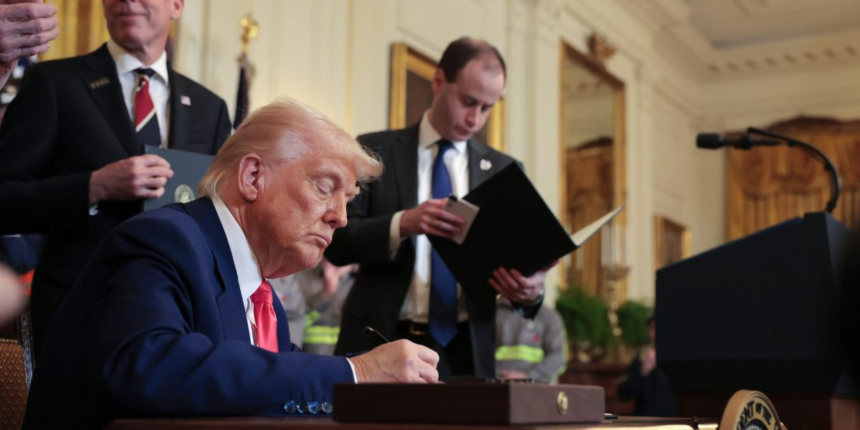The Trump administration is instead considering selling leases for coal mining on more than 2,600 square miles (6,800 kilometers) of federal lands in that region, according to documents released by officials. That’s an area larger than Delaware.
The tax bill that Trump signed last week lowered royalty payments from 12.5% to 7% for companies that mine coal on public lands. The bill also has a mandate to make available for leasing 6,250 square miles (16,200 square kilometers) — an area greater in size than Connecticut.
A spokesperson for the Interior Department’s Bureaeu of Land Management said Monday’s announcement about Powder River Basin leasing was preliminary and could change after a public comment period. The agency declined to say how much interest it expects from mining companies or how quickly new mines could open.
Ashley Burke with the National Mining Association said coal companies have “clear interest in additional leasing,” but declined to say how much acreage they might buy.
“When we see our grid stretched to its limits with energy demand soaring, we must acknowledge our energy reality, which means reversing prior ill-conceived and punitive policies,” she said of changes to leasing under Trump.
The Biden administration had calculated that an end to federal coal sales would reduce emissions by the equivalent of 293 million tons (266 million metric tonnes) of carbon dioxide annually. That’s comparable to emissions from about 63 million gasoline-power vehicles, according to a government analysis.
“Not only is new coal-leasing inconsistent with the imperative to arrest the advance of climate change, the coal plants that used to burn Powder River Basin coal are shuttering as more affordable, clean energy comes into the market,” said Jenny Harbine with the environmental law firm Earthjustice.
Scientists say greenhouse gas emissions from burning coal is a leading driver of human-caused climate change that’s making weather more extreme, wildfires more frequent and destructive and water supplies less reliable.
Fourteen active coal mines in the region accounted for about 40% of total U.S. coal production in 2022.









